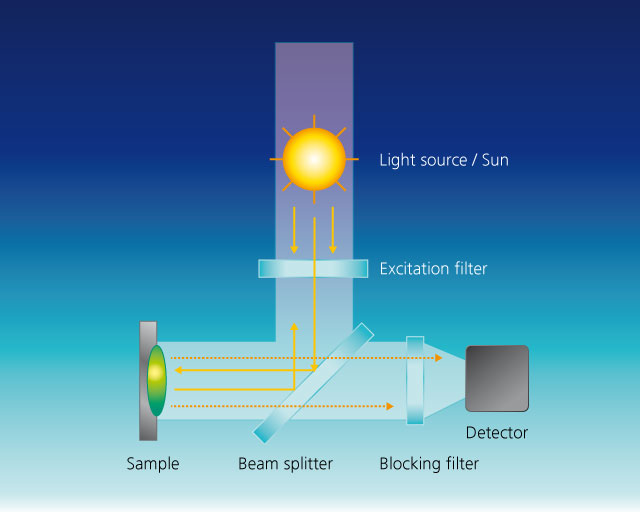
Optical filter for space applications

Optical measurement methods and instruments of the most varied types are becoming increasingly important in the field of space research. It is, for example, planned to push forward current research into and observation of “space weather“ or the solar wind with the aid of the “Solar Orbiter“ space probe. The satellite is scheduled to launch in 2017 and, applying spectroscopic measurement methods, will supply more precise information about events in the sun’s corona. Even the James Webb Space Telescope, successor of the famous Hubble telescope, cannot manage without high-precision spectrometers. In most cases optical coatings play a crucial role in the measuring instruments used. The demands made of such coatings, which are primarily deposited by vacuum-based PVD (physical vapor deposition) are constantly increasing. With the new EOSS® coating platform, developed and built at the Fraunhofer IST, highly demanding optical coatings for space applications can be deposited.

The EOSS® coating concept of the Fraunhofer IST
With the EOSS® sputtering system not only extremely defect free coatings but also highly complex coating designs with several hundreds of layers can be produced on an industrial scale with extreme precision and uniformity of the coating and with high process reliability. The thickness of each individual layer falls within the range of a few nanometers. At the same time up to ten substrates each with a diameter of 200 mm are arranged on a turntable which rotates continuously and rapidly throughout the coating process. The use of cylindrical targets delivers crucial advantages since, in contrast to the situation with planar targets, the coating thickness distribution is extremely stable in the long term. Deviation is ±0.15 %.
Coating thickness distribution on optical systems such as lenses or filters is very important indeed since even the smallest deviations from the coating thickness specified and required will result directly in errors in imaging or analysis. With EOSS® technology not only are almost absolutely homogeneous coatings possible but selective lateral gradient filters can also be produced.
Example: fluorescence investigations on earth with the aid of optical filters
High-precision optical filters are used in spectrometers installed in satellites to study, for example, terrestrial vegetation. The central measured quantity is the chlorophyll content of plants, which is ultimately responsible for photosynthesis and carbon dioxide decomposition, and thus gives an indication of the condition of the vegetation. Chlorophyll, the green leaf pigment, is excited by sunlight and emits an electromagnetic radiation of a specific wavelength. The fluorescent light is picked up by a sensitive detector in the spectrometer. A schematic of a typical spectrometer is shown in the opposite figure. A spectrometer of this kind can contain up to three different filters: the purpose of the excitation filter is to permit passage of only the excitation light and filters out all wavelengths apart from the one of interest. The beam splitter is a dichroic cut-off filter. The blocking filter’s job is to filter out the excitation light. The filters in a system of this kind must satisfy extraordinarily high demands: for example, the filter must have an optical density of more than 6 (OD 6) in the unwanted spectral regions.
Example: remote sensing with optical systems in satellites
Another example of optical systems in satellites is imaging spectroscopy, which is used among other things for the innovative remote sensing technology. Here a broad wavelength region extending beyond the visible is imaged with the aim of identifying minerals or measuring vegetation states from space. Precisely coated filters and mirrors are absolutely essential here. Selectively inhomogeneous filters are also being used increasingly here which allow preselection of certain light components depending on the position on the receiver.
Example: precision optical filters for laser projection
The figure above shows an example of an optical filter which was produced with the new EOSS® technology. This is a so-called “notch“ filter, in which light transmission in the “green“ spectral region of 532 ±10 nm is reduced by 6 orders of magnitude. Transmission here is thus less than 10– 4 %. In the remaining spectral region between 200 and 1100 nm the filter has a high transmission of more than 95 %. This kind of filter serves as a blocking filter in the opposite figure. The high blocking effect is necessary due to the fact that fluorescent intensities are very low and the detectors can measure extremely low light intensities, which means that a high level of scattered-light suppression must be assured. In some cases notch filters with over OD10 are required today and this calls for almost flawless coatings. EOSS® technology is able to satisfy even extreme requirements of this kind.
This article is part of the annual report 2014.
